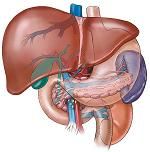Working Toward Eliminating Hepatitis
Health programs and efforts to inform the public about the importance of sharing liver education can play a major role in prevention as well as patient care.

Despite major advances and extensive awareness campaigns being promoted to encourage testing for hepatitis, we’re very far from reaching elimination targets. Many barriers exist including poor access to prompt testing, persistently high costs of treatment, and ultimately, lack of awareness about the need for testing and treatment.
One study out of Kentucky is attempting to make headway by utilizing diagnostic methods for on-the-spot testing with rapid results in approximately one hour after a finger prick. This can significantly improve testing opportunities, and if coupled with immediate treatment, we have greater odds of reaching difficult to reach vulnerable populations.
However, this new effort to fortify testing, does not negate the power of public education and awareness.
A vitally important component that has been glaringly absent in current efforts to eliminate hepatitis B and hepatitis C, has been education about the liver itself. Most people have little to no knowledge of how important their non-complaining liver is, how it is damaged by hepatitis viruses or how to protect it from harm. Tragically, they are unknowingly participating in liver damaging activities including those that expose them to hepatitis viruses that infect their liver and its miraculous life supporting liver cells.
Awareness campaigns have tried for several years to encourage people to be tested for silent or undiagnosed hepatitis that affects an organ they know little or nothing about. This issue is deterring screening and testing, as well as treatment initiation and compliance.
Addressing this issue, hepatitis, and other liver related diseases including obesity and cancer, the Liver Health Initiative (LHI) has made information about complex liver functions understandable, personal and even entertaining using memorable analogies and story-telling techniques. These communication techniques empower individuals to act on information provided.
Prominent institutions including Virginia Commonwealth University Medical School, Johns Hopkins University Medical School and Bloomberg School of Public Health, University of Illinois, The Carle Illinois Medical School, and University of North Texas Health Sciences Center among others have adopted LHI’s approach and Foundation for Decision Making teaching tools to enhance their health education programs and efforts to inform their audiences about the importance of communicating liver health information to patients and the public as well.
Currently, information about the liver is absent in schools and most hepatitis agencies and programs. Although two research studies confirm the effectiveness of liver health education in motivating individuals to avoid liver damaging behaviors, children and adults are being denied information about the liver. The National Academy of Sciences requires additional studies to be conducted to provide a stronger foundation for integrating this approach broadly in interventions to address hepatitis and other liver diseases.
While working hard to develop a long-awaited vaccine against hepatitis C, Sir Michael Houghton, PhD, Nobel Laureate and member of LHI Board of Directors said, “These understandable and memorable liver related communication techniques enhance efforts to empower patients to seek testing for hepatitis and other liver diseases. An initiative that is long overdue.”
